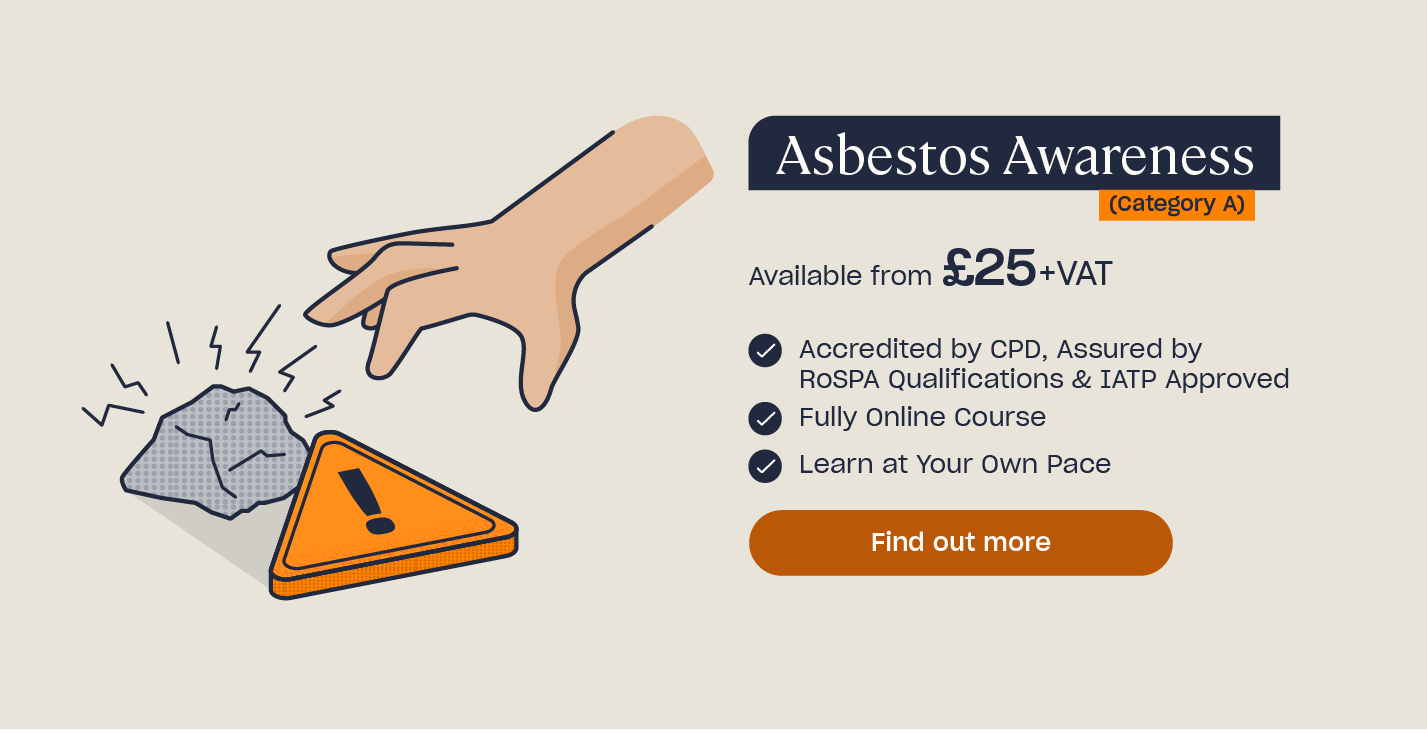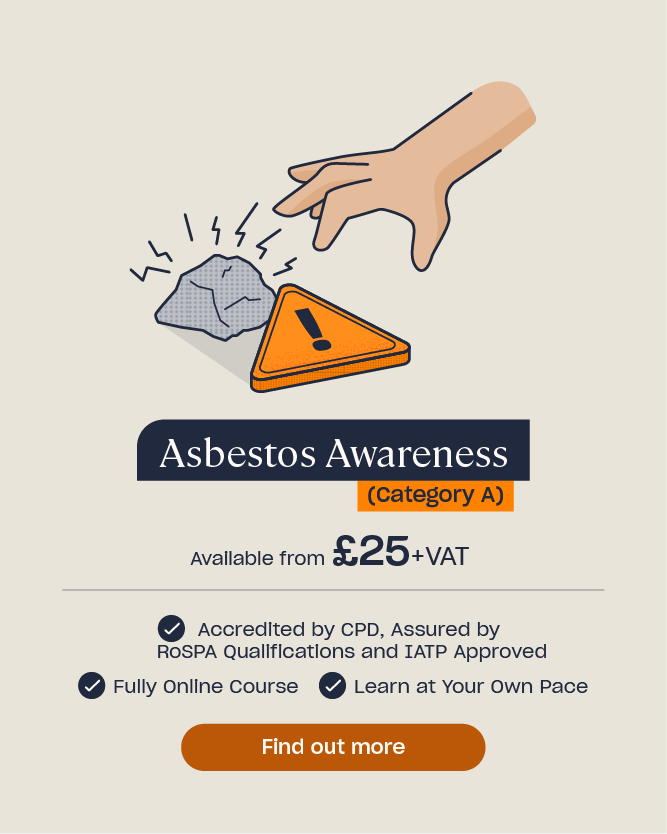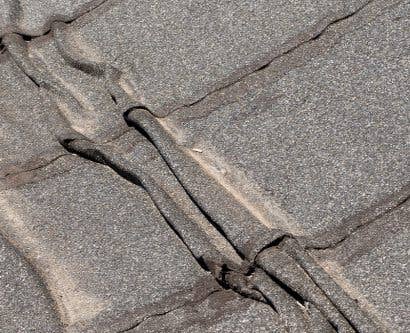What Are The Three Types of Asbestos Training?
If you carry out work that could potentially, or will definitely, involve coming into contact with asbestos-containing materials, receiving appropriate training is vital. You must know how to work safely around asbestos and know what control measures should be in place, as it’s still present in many UK buildings and poses a severe risk to health and safety.
Regulation 10 of the Control of Asbestos Regulations 2012 states that “Every employer must ensure that [their] employee[s] are given adequate information, instruction and training where that employee is, or is liable to be, exposed to asbestos, or if that employee supervises such employees.”
In order to meet the requirement of providing ‘adequate’ training, it’s important for employers to consider which specific type of asbestos training their staff need. Do you know which level is right for you? In this article, we’ll look at what various types of asbestos training cover and which one is suitable for certain job roles.
How To Determine What Type of Asbestos Training Staff Require
The specific type of asbestos training that staff should receive depends on the work they carry out. The employer of a business is responsible for organising training, so it is their duty to assess the risks that the workers will be exposed to, including those posed by asbestos, and then plan appropriate training accordingly.
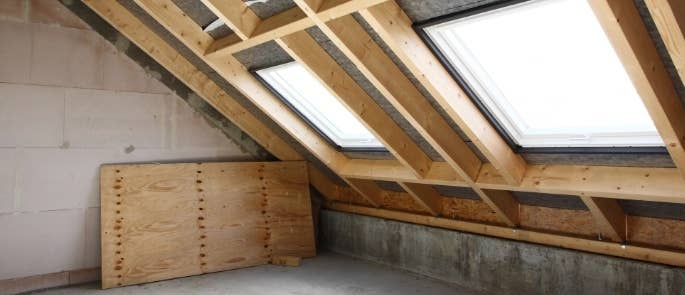
Training is generally split into three categories, which helps you identify which is most suitable:
- Asbestos Awareness Training (Category A).
- Non-Licensed Asbestos Training (Category B).
- Licensed Asbestos Work (Category C).
All asbestos training will make staff aware of asbestos risks, what control measures must be in place, and how to carry out their specific work activities safely. However, each of these categories provide different levels of knowledge: Category A is a more fundamental awareness level for informing staff of risks, while Category C is designed for high risk work that must be carried out by licensed contractors.
Below is a breakdown of the three categories, so you can identify which job roles require which one. It’ll also make you aware of what information each should contain.
Asbestos Awareness Training (Category A)
Asbestos awareness training is a fundamental level designed for people who do not directly work with asbestos-containing materials, but who may be exposed to risks. It focuses on making workers aware of how to avoid the risks and avoid potentially disturbing asbestos.

Examples of job roles that asbestos awareness training is designed for include:
- Construction and demolition workers.
- Plumbers.
- Roofers.
- Plasterers.
- Painters and decorators.
- Heating or ventilation engineers.
- Carpenters and joiners.
- Electricians.
- Gas fitters.
Category A would be sufficient for these roles if they need to carry out work in a building that contains undisturbed asbestos, but the activity does not require intentionally working with asbestos-containing materials.
Remember: Category A does not provide adequate training for working directly with or removing asbestos-containing materials. Those types of activities will require either Category B or C training.
Note that this is not a comprehensive list of job roles. Any work that takes place in areas that may or definitely contain asbestos – especially activities that could affect the fabric of the building – but does not involve directly working with the asbestos, will fall under this category.
Need Asbestos Awareness Training?
High Speed Training provides an online Asbestos Awareness Training (Category A) training course that is CPD accredited and approved by the The Royal Society for the Prevention of Accidents (RoSPA) and Independent Asbestos Training Providers (IATP) approved. You can find out more about it by visiting our website.
Non-Licensed Asbestos Training (Category B)
Non-licensed and notifiable non-licensed work (NNLW) involves directly working with or disturbing asbestos-containing materials in some capacity, which means workers need a higher level of information, instruction, and training than what is given in Category A.
Category B training prepares those who carry out non-licensed and notifiable non-licensed work to do so safely if they must work with or disturb asbestos.
It will usually cover control measures for minimising risks, safe work methods, understanding risk assessments, personal protective equipment, waste handling, and emergency procedures. It should also cover circumstances when non-licensed work becomes notifiable.
Examples of job roles that may need Category B asbestos training are similar to those that may need Category A, but with the added criteria that their work directly involves asbestos-containing materials or will disturb asbestos. For instance, if an electrician needs to temporarily move asbestos-containing materials in order to install cabling, they will need to receive Category B training.
More specific examples of work activities that may fall into this category include:
- Drilling holes into asbestos-containing materials (such as for sampling or installing shelving).
- Removing floor tiles that contain asbestos.
- Removing and reattaching loosely fixed asbestos insulating board panels.
- Cleaning or repairing asbestos cement sheet roofing.
- Maintenance work on asbestos-containing conveyor belts, bonded rubber, or electric cables.
- Short-duration work to repair minor damage in asbestos insulin boards.
More complex activities that are not considered licensable but are notifiable would also require Category B training, though the training will need to cover the risks involved in the notifiable work.
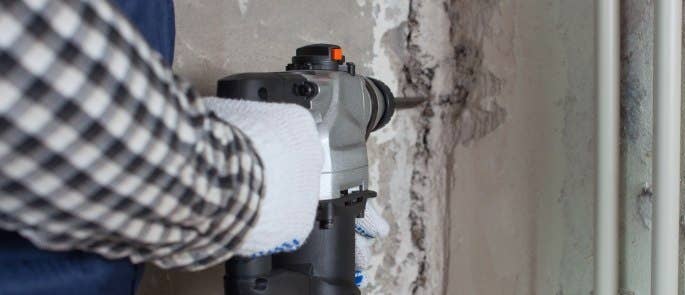
Whether or not a work activity is notifiable depends on the level of risk and what it involves, so it will be up to the employer to identify this by carrying out a risk assessment. For instance, if the work requires removing asbestos-containing materials that are in poor condition or have a high friability, it is usually considered notifiable.
Note: most activities which involve working with higher risk asbestos-containing materials will be considered licensed work. These must only be carried out by licensed contractors, who will need the next category of training. The employer must therefore ensure they are assessing work thoroughly to identify what category it falls into.
Licensed Asbestos Work (Category C)
Any high-risk activities that involve working with, disturbing, repairing, and removing asbestos and asbestos-containing materials (as well as supervising these activities) must be carried out by licensed contractors.
Licensed contractors must receive an appropriate level of training, such as Category C as well as practical training, before they can carry out any licensed work.
It’s important to note that, as the HSE states, training must be followed up by on-the-job consolidation of the knowledge and skills acquired. It’s crucial for them to be able to demonstrate they can carry activities out safely, such as physically handling asbestos.
The HSE states that licensable work with asbestos includes activities where:
- Worker exposure to asbestos is not sporadic and of low intensity.
- The risk assessment cannot clearly demonstrate that the control limit will not be exceeded.
- The work is on asbestos coating, asbestos insulation, or asbestos insulating board, where the risk assessment demonstrates that the work is not short duration work. An example of short duration is when the work involving these materials will take no more than two hours in any seven-day period, and no one person works for more than one hour in that two-hour period.
They also state that more specific examples of work activities include:
- Removing sprayed coatings (limpet asbestos).
- Any work involving loose fill insulation.
- Work on asbestos millboard.
- Removal or other work which may disturb pipe lagging.
- Cleaning up significant quantities of loose or fine debris that contains ACM dust, where the work is not sporadic and of low intensity, the control limit will be exceeded, or it is not short duration work.
- Working on asbestos insulating boards, where the risk assessment indicates that it will not be of short duration.
Category C training will cover a wide range of detailed topics, which are necessary for preparing licensed contractors to carry out the high-risk work involved in their role.
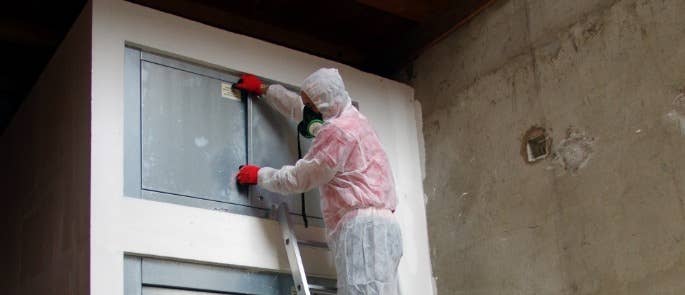
For example, it usually contains fundamental guidance on asbestos risks to health, where it’s commonly found, and legislation, as well as higher level information on techniques for safe removal of asbestos, transport procedures and waste management, cleaning and decontamination, wearing personal protective equipment, site inspections, emergency procedures and more. It will also typically need to be supplemented by practical training, as mentioned earlier.
Remember: training alone is not enough to carry out licensable work with asbestos. Workers must be fully licensed and the work must be notified to the appropriate enforcing authority. Licensing can be acquired through the HSE, which you can find further guidance on here.
It’s crucial for staff to receive the right level of asbestos training, so they understand how to work safely. Each of the three main categories offer different levels of information, instruction, and training, so it’s up to the employer to assess the work their employees will be carrying out and provide adequate training accordingly. This article has hopefully helped you to identify which type of asbestos training is right for the staff in your business.
What to Read Next:
- Online Asbestos Awareness (Category A) Training Course
- How to Conduct an Asbestos Risk Assessment
- What are the Symptoms of Asbestos Exposure?
- Can You Remove Asbestos Yourself?
- Asbestos Quiz
- What is Asbestos Awareness Training & Who Needs it?


